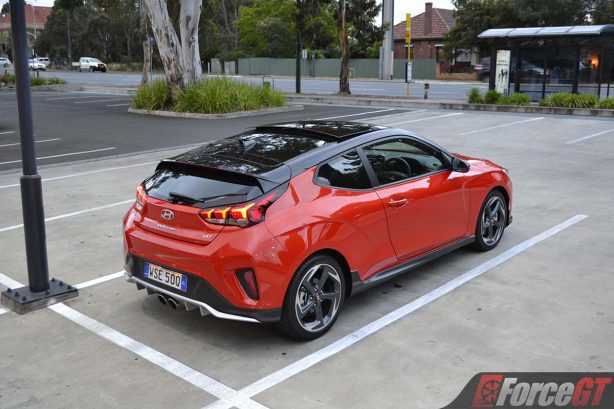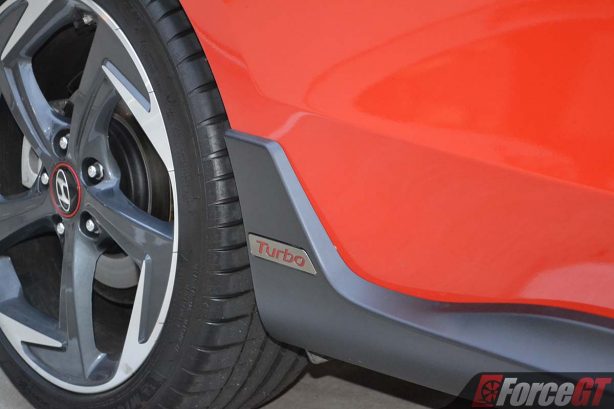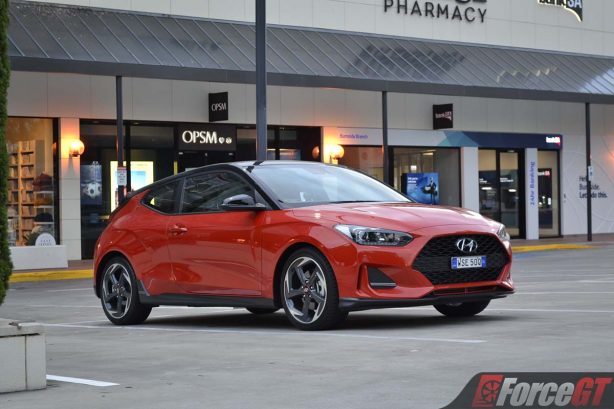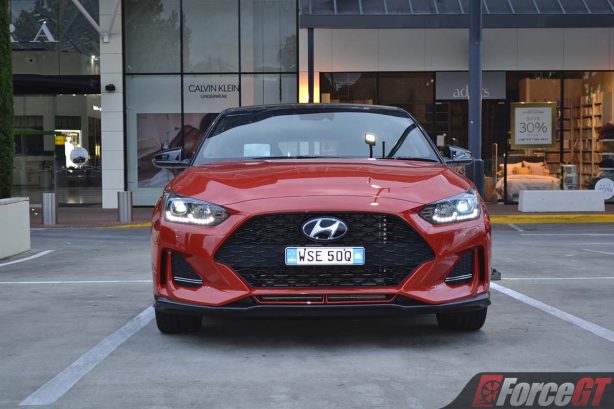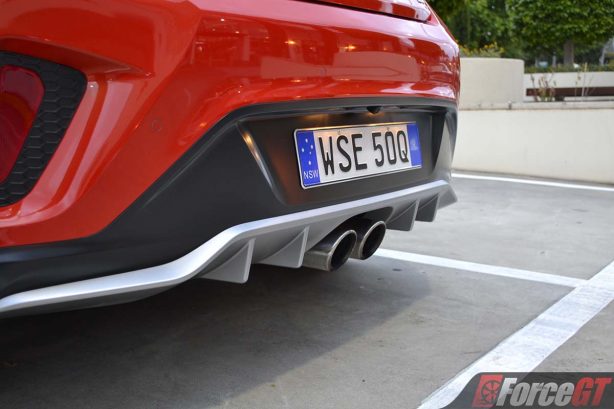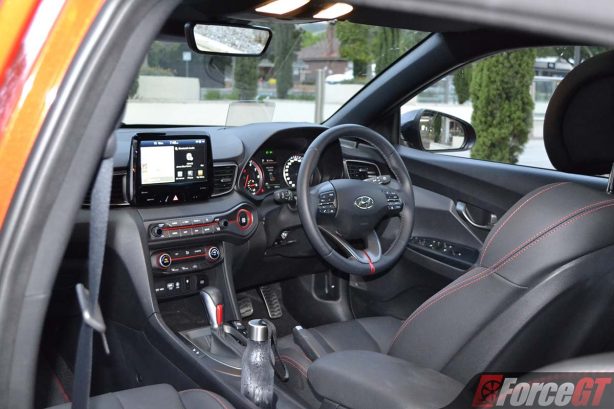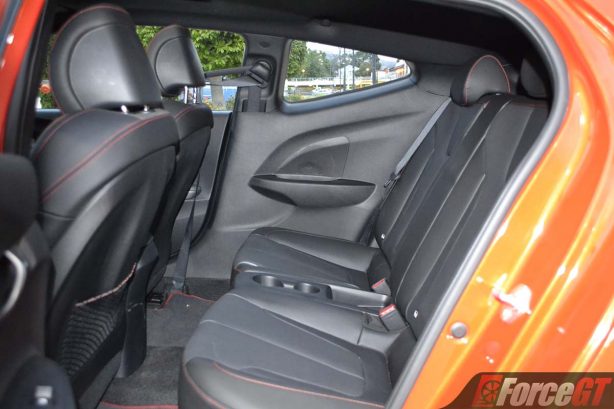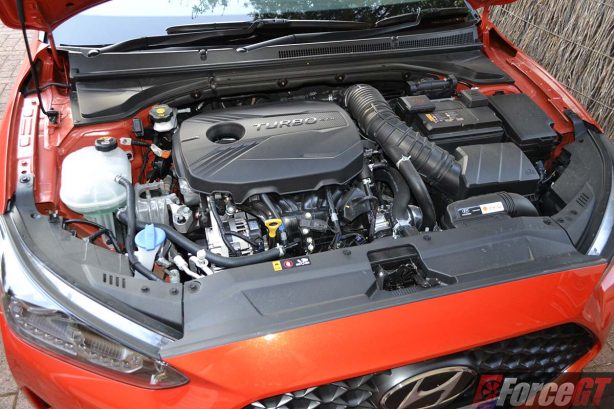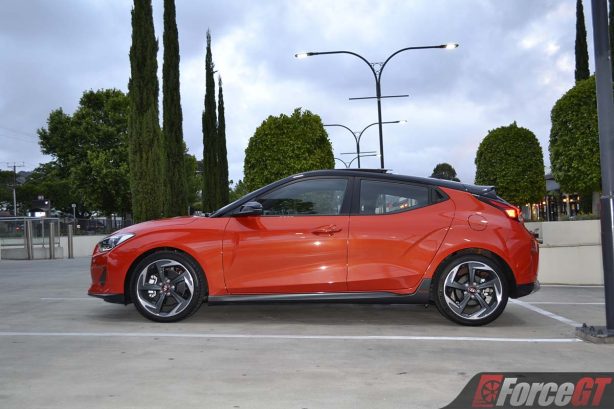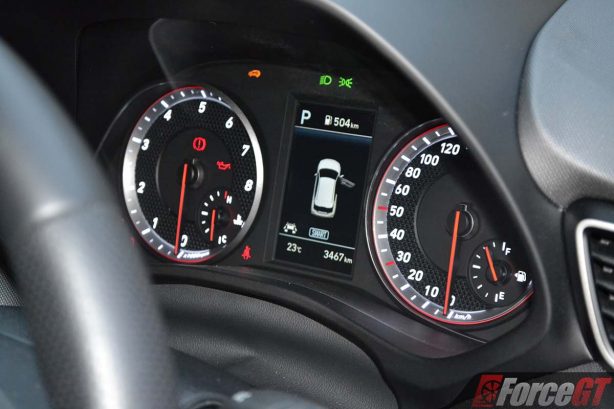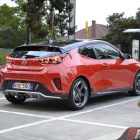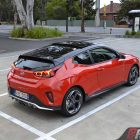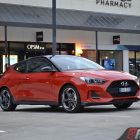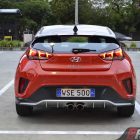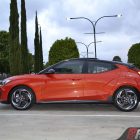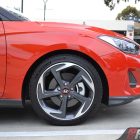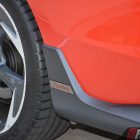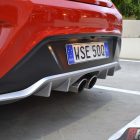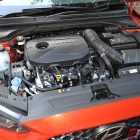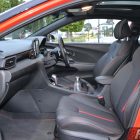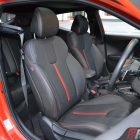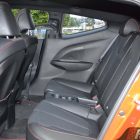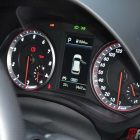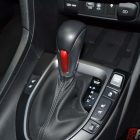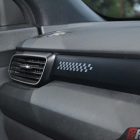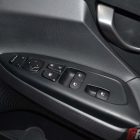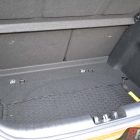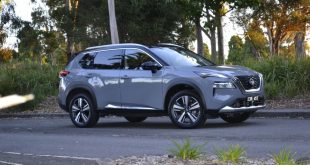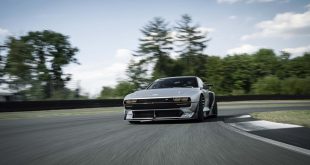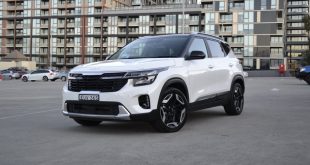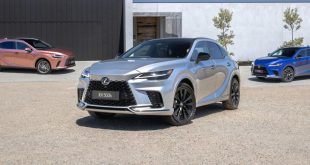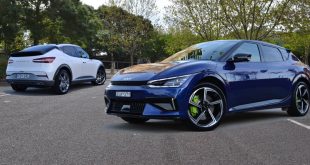I still vividly recall the attention the first-generation Hyundai Veloster garnered when I tested it six years ago. Its low slung, coupe-like styling was an instant hit with young and old alike. What’s more shocking was the fact that it came from Hyundai, which until then, produced sensible but relatively dull vehicles. It signalled the start of a seismic shift from the Korean brand that now produces some of the most stylish cars on the market.
Six years on, the second-generation model retains its quirky coupe-hatch persona but this time around, it’s lost that shock factor. Thankfully, the Veloster makes it up with improvement in all key areas.
Read on to find out what’s new.
Range and pricing
Just three variants are on offer in Australia; the base model – simply known as the Veloster – starts from $29,490 and comes with a 110kW/180Nm 2.0-litre naturally aspirated four-cylinder petrol engine connected to a six-speed manual. A six-speed automatic costs an extra $2,300.
The mid-tier Veloster Turbo comes in at $35,490 with a more powerful 150kW/265Nm 1.6-litre turbocharged four-cylinder petrol engine and six-speed manual.
The Veloster Turbo Premium tops the line up from $38,990 featuring the same 1.6-litre turbo engine and six-speed manual. A 7-speed dual-clutch is available for the turbo models costing an additional $3,000. All prices before on-road costs.
Unfortunately for Australia, the bahn-storming Veloster N available in some overseas market is a left-hand drive only model. That said, we should count our lucky stars as Hyundai continues to develop the Veloster (a relatively low-volume car) in right-hand drive exclusively for Australia and New Zealand.
On the outside
Like its predecessor, the MkII Veloster continues with its unique yet practical 2+1 doors configuration, offering a single door on the driver’s side and two on the passenger side.
It’s marginally smaller and lower than the outgoing model, although wheelbase remains unchanged at 2,650mm.
The refreshed styling is more aggressive than before, with larger air intakes at the front and Hyundai’s latest cascading grille, but the bulging wheel arches of old have given way to more delicate creases, losing some of its masculinity along the way.
The headlights are also sleeker but features ‘retro’ style individual LEDs as running lights instead of the more fashionable light bar these days.
Side on, the rear door handle remains camouflaged near the roof, speaking of which, can be had in black on the Turbo Premium ($1,000 option).
Around the back, the pair of central exhaust pipes remain while the groovy LED light signature give the Veloster a distinctive look from the behind.
The rear door opening is now 58mm wider although it still isn’t what you call big and requires some careful manoeuvre to fold yourself in.
All variants get 18-inch alloy wheels with model-specific finishes and Michelin Pilot Sport tyres, while Turbo models come with a sports body kit with different front grille and rear spoiler, as well as LED headlights (low beam) and taillights.
On the inside
Once inside, the driver sits 5mm lower than before while the instrument cluster is 10mm higher for a sportier feel. The A-pillars are also 30mm narrower and Hyundai says both the A- and C-pillars are less obtrusive for better vision.
Cabin space has improved too, with rear headroom up by 15mm, front shoulder room by 11mm and rear shoulder room by 9mm.
Rear seat passengers can now travel without getting baked by the fierce Aussie sun, as the rear window is no longer directly above their heads thanks to the tailgate hinges moving rearwards by 450mm.
There’s sufficient head and legroom in the back for two adults to travel comfortably but the lack of rear air vents is an oversight.
The new Veloster’s boot space has also dropped slightly from 320 to 303 litres and its 60/40 split rear seats don’t quite fold flat, leaving a noticeable lip. Nevertheless, you can still fit taller objects in the boot relatively easily.
Cabin presentation is a big step up in terms of design, refinement and equipment, although disappointingly, the entire dashboard and the door cards are made of hard plastic.
The range-topper’s head-up display is similarly of the cheaper, flip-up variety instead of windscreen projection.
The base Veloster gets a 7.0-inch touchscreen display compare to the larger 8.0-inch of the other two, all featuring Apple CarPlay and Android Auto. Climate control (single-zone) is standard, along with sports bucket seats, heated side mirrors and leather-wrapped steering wheel and gear lever.
Stepping up to the Veloster Turbo brings keyless entry with push button start, sat-nav and DAB+ digital radio, a larger 4.2-inch TFT driver’s multifunction display (3.5-inch on the Veloster), digital performance gauges, electric folding exterior mirrors, leather/cloth upholstery, alloy pedals, a luggage net and steering-wheel paddles shifters for the auto.
The range-topper gets all the goodies, including full leather upholstery, heated and ventilated front seats, 8-way powered driver’s seat, antiglare rear-view mirror, a heated steering wheel, Qi wireless phone charging and a panoramic sunroof.
On the safety front, Hyundai’s SmartSense suite is standard range-wide. It incorporates Driver Attention Warning (DAW), Forward Collision Warning (FCW), camera-based Forward Collision-Avoidance Assist (FCA), Lane Keep Assist (LKA), Hill Start Assist, rear-view camera, rear parking sensors and tyre pressure monitoring.
Turbo variants get a more sophisticated FCA bolstered by a radar sensor (auto only) with interurban functionality and pedestrian detection, Smart Cruise Control with adaptive function (which annoyingly isn’t the stop and go type and disengages below 30km/h), Blind-Spot Collision Warning (BCW), Rear Cross-Traffic Collision Warning (RCCW) and High Beam Assist (HBA).
Under the skin
We drove the Turbo Premium equipped with a 150kW and 265Nm 1.6-litre turbocharged four-cylinder petrol engine. It’s essentially the same engine as the previous generation model but now comes with an over-boost function that cranks up the torque to 275Nm when accelerating flat-out. Our test car also comes with the 7-speed dual-clutch transmission.
While maximum torque is delivered from 1,500rpm, there’s minor turbo lag if you’re in a hurry. The dual-clutch is also slightly hesitant at low speeds which exacerbates the issue. However, once on the move, it’s an effortless powertrain.
Exhaust note has also improved compared to the old model and sounds meatier, though you still don’t get the pops and crackles on overrun like the full-fat i30 N.
Fuel consumption is rated at 6.9L/100km under the combined cycle but we saw 8.8L/100km after our weeklong test.
On the road
The new Veloster is built on the same platform as the latest i30. Compared to the outgoing model, the new car adopts an independent multi-link rear suspension, torque vectoring and a faster steering rack.
Like Hyundai Australia’s wider range, it also benefits from local chassis tuning with the company’s engineering division going through 15 front damper iterations and 28 rear damper iterations before arriving at production settings that is said to provide the best blend of comfort and capability.
The new car is also more rigid, thanks extensive application of high-strength steel, hot-stamped A-pillar and single side sill member, dual-rail reinforced roof structure, cabin and rear opening sub-structure strengthening, and structural improvement to the front sub-frame energy absorber.
In addition, Hyundai says the new Veloster is constructed with 121m of adhesives – 30 times more than the previous generation – which combined with spot welding produces a more rigid frame.
As the result, the new Veloster feels more substantial than before with well-damped body motions and well-controlled roll. Its refinement has also improved with the cabin noticeably quieter than I remember of the old model. The ABS based Torque Vectoring does a good job in keeping understeer at bay, while the Michelin Pilot Sport 4 tyres provide generous grip in corners.
Interestingly, for a car with sporting intention, the Veloster’s brakes are on the softer side and don’t bite hard enough.
In the long run
Like the rest of the range, Hyundai offers a five-year, unlimited kilometre warranty on the Veloster along with complimentary 1,500km service, and 10 years roadside assist and sat-nav map updates when you service with a Hyundai dealer.
The car also comes under Hyundai’s lifetime capped price service plan, costing $299 every 10,000km or 12 months ($375 at 40,000/48 months).
Verdict
Design & Comfort
Performance & Handling
Quality
Economy
Equipment & Features
OUR SCORE
3.8/5
+ Plus
- Big improvement in cabin presentation
- Improved handling
- Much improved refinement
– Minus
- Hard plastics on dash and doors
- Smaller boot space
- Jerky dual-clutch transmission at low speeds
Overall
While the new Veloster might not wow on-lookers as much as it used to, it’s a better car in every way. It’s better equipped, handles better and comes with better refinement.
It’s no hot hatch but as a warm one, the Veloster fulfils the brief nicely.
2020 Hyundai Veloster pricing and specification
| Price (Excl. on-road costs): | From: $29,490 As tested: $42,990 (Turbo Premium) Tested option:
|
| Warranty: | 5 years/unlimited kilometers |
| Warranty Customer Service: | 1 year roadside assist |
| Country of Origin: | South Korea |
| Service Intervals: | 12 months/10,000km |
| Engine: | 2.0-litre turbocharged, direct-injected inline 4-cylinder petrol: 150kW @ 6,000rpm, 265Nm @ 1,500-4,500rpm (275Nm on overboost) |
| Transmission: | 7-speed dual-clutch |
| Drivetrain: | Front-wheel drive |
| Power to Weight Ratio (W/kg): | 111.1 |
| 0-100km/h (seconds): | N/A |
| Combined Fuel Consumption (L/100km): | Claimed: 6.9 / Tested: 8.8 |
| RON Rating: | 91 |
| Fuel Capacity (L): | 50 |
| Body: | 2+1 door hatchback, 4 seats |
| Safety: |
|
| Dimensions (L/W/H/W-B) mm: | 4,240/1,800/1,399/2,650 |
| Turning Circle Between Kerbs: | 10.6 |
| Ground Clearance: | 141 |
| Kerb Weight (kg): | 1,350 |
| Boot Space (min/max)(L): | 303/1,081 |
| Towing Capacity (kg): | N/A |
| Entertainment: |
|
The Competitors: Kia Cerato GT
 ForceGT.com Car News, Car Reviews, Video Reviews, Tuning and much more.
ForceGT.com Car News, Car Reviews, Video Reviews, Tuning and much more. 